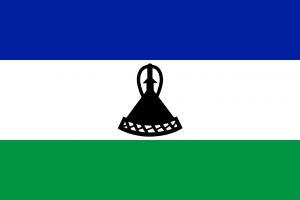Language/Southern-sotho/Grammar/Future-Tense
Hi Southern Sotho learners! 😊
In this lesson, we will be discussing the future tense in Southern Sotho. As an intermediate learner, you may already have a good understanding of the language's grammar. However, understanding how to express future actions is a crucial part of any language learning process.
Finish this lesson and explore these related pages: Negation & Plurals.
What is the future tense?[edit | edit source]
The future tense in Southern Sotho is used to describe actions that will take place in the future. In English, we typically add the word "will" before the verb. For example, "I will go to the shops." In Southern Sotho, the future tense is formed by using the auxiliary verb "ho" before the verb root. For instance, "Ke ho ya ditorong" means "I will study."
You may have noticed that the future tense does not require a negative or affirmative particle. This is one of the advantages of learning Southern Sotho, as it makes the language simpler to learn.
How to form the future tense[edit | edit source]
To form the future tense in Southern Sotho, follow these steps:
Step 1: Identify the verb root. For example, "fumana" which means "to find."
Step 2: Add the auxiliary verb "ho" before the verb root. The verb in the sentence would then be "ho fumana."
Step 3: Add the correct personal prefix before the auxiliary verb to show who is performing the action. For example, "Ke ho fumana," means "I will find."
Below is a table that shows the personal prefixes used in the future tense:
| Subject (Personal Prefix) | Prefix |
|---|---|
| I | ke |
| You (singular) | u |
| He/She | e |
| We (inclusive) | re |
| We (exclusive) | le |
| You (plural) | li |
| They | ba |
Here are a few examples:
- Ke ho fumana. (I will find.)
- U ho hloka. (You will search.)
- E ho leka. (He/she will laugh.)
- Re ho rata. (We will love.)
- Li ho baka. (You (plural) will build.)
- Ba ho qoba. (They will defeat.)
In Southern Sotho, it's common to use the future tense along with other parts of speech to form more complex sentences. Below is an example dialogue:
- Person 1: Ke tla fumana ho nna matsoho. (I will find my glasses.)
- Person 2: Ho fumana ke ua batla ho nka. (Finding is what you need to do.)
Exceptions[edit | edit source]
Although learning Southern Sotho grammar is far simpler compared to other languages, there are exceptions to note when using the future tense:
Exception 1: If the verb's first letter is "h," the "ho" auxiliary particle is removed. For example: "Ho hira" (I will dance) becomes "Ke hira." (I will dance.)
Exception 2: If the verb root starts with "a" or "e," then "a ho" and "e ho" are used instead of "ho." For instance, "A ho ipa" means "I will give," and "E ho fella" means "He/she will speak."
Interesting facts about Southern Sotho[edit | edit source]
Southern Sotho, also known as Sesotho or Basotho, is a Bantu language spoken primarily in South Africa and Lesotho. It is one of the eleven official languages in South Africa, spoken by around five million people.
Did you know that the language is rich in idiomatic expressions? For example, when Southern Sotho people want to say they are feeling hungry, they will usually say "Ke na kea eja," which means "I am eating myself."
Practice[edit | edit source]
Now that you understand how the future tense works in Southern Sotho, it's time to put your skills to the test. You can practice with native speakers on Polyglot Club. Find native speakers and ask them any questions. You can also use the Q&A forum on the website.
Sources[edit | edit source]
Other Lessons[edit | edit source]

